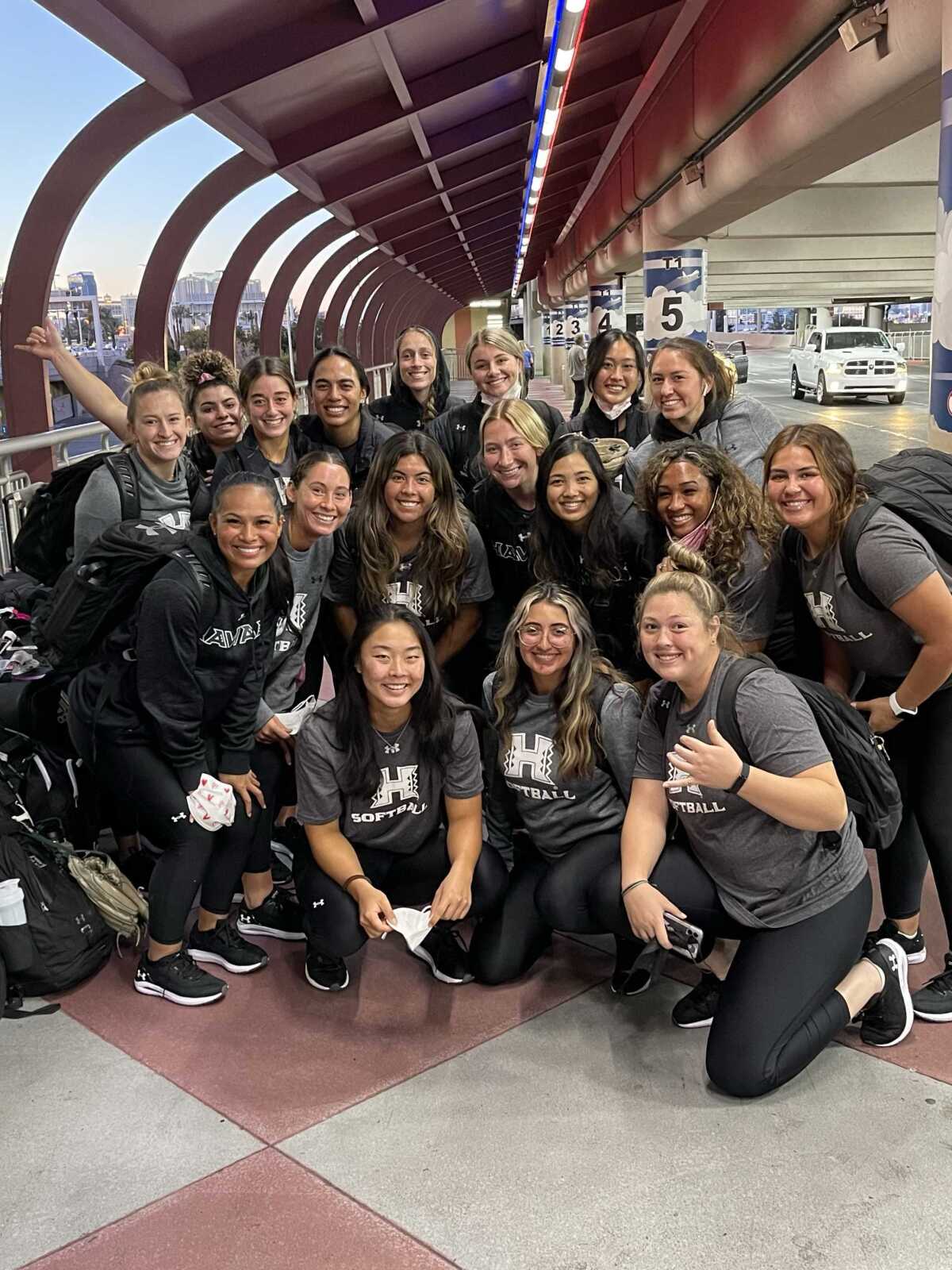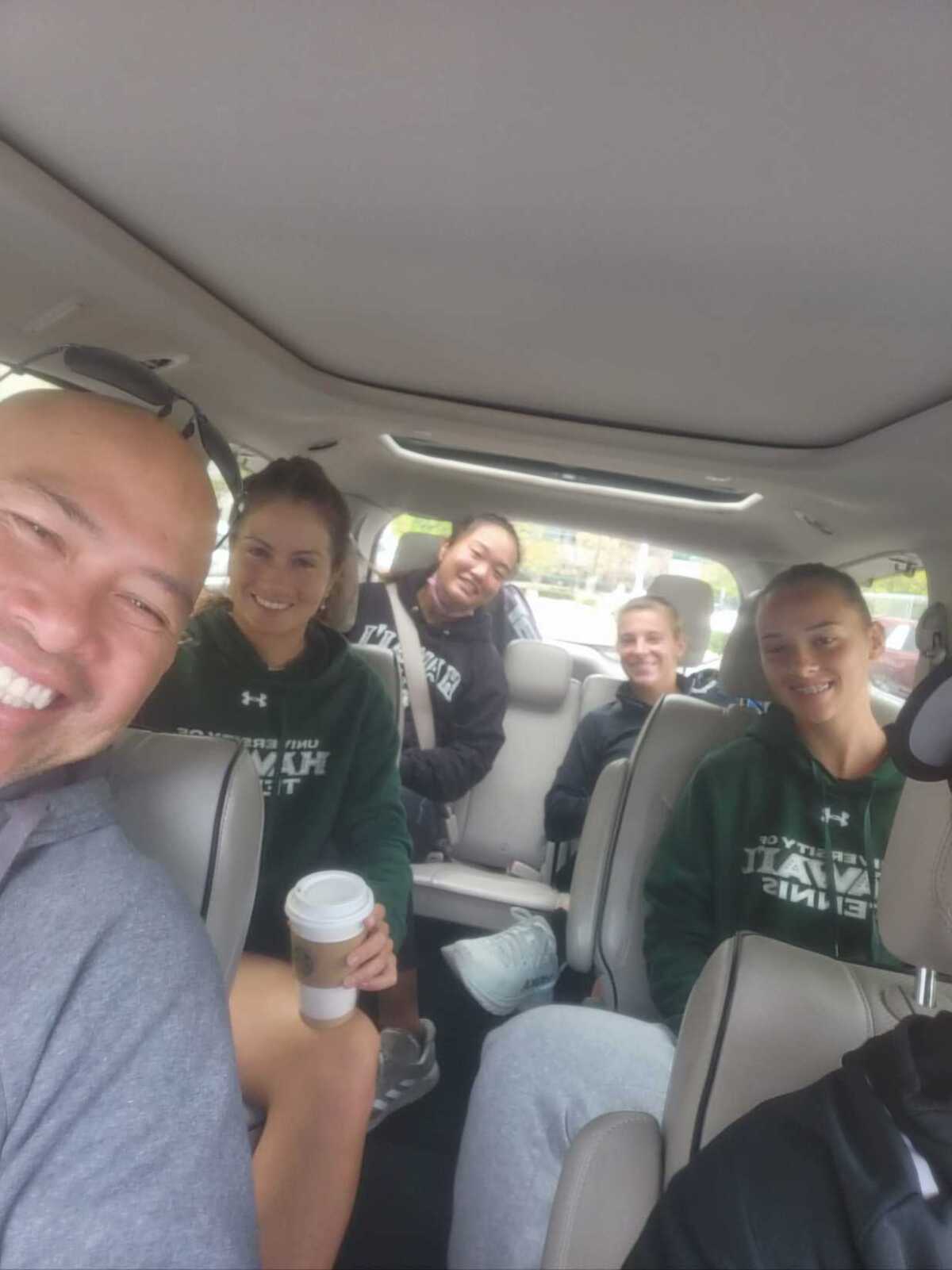They download their favorite Netflix shows, organize their homework and charge their electronic devices. Whether on the field or in the sky, setting is everything in Hawaii.
For college sports teams, a road trip balancing academic and athletic pressures is an exact science. The Rainbow Warriors holds a Ph.D. in the major. Hawaii sports programs provide six-hour, one-way flying to play their closest opponents in the bi-weekly convention A timely case study of UCLA and UCLAwhich will be eligible to upgrade to frequent flyer status once they join the Big Ten in 2024.
Similar to their island counterparts, Troy and the Bruins will be on a nearly five-hour ride when they play in Maryland or Rutgers, the two farthest outposts. Visiting eight of the current Big 15 members will require the same three-hour time shift to the West Coast schools that Hawaiian teams experience when they come to California.
The secrets of conquering the sky are vast and unique. Volleyball player Milana Bird sleeps on the plane with a small pillow for her neck and covering her eyes in case the automatic cabin is illuminated with a blanket. Kamaka Hiba, a striker on the men’s basketball team, gets involved in anime, tries to get at least three hours of sleep on every flight, and is always willing to barter with coaches for a seat with more leg room to accommodate 6 hours. foot frame 10.
When it comes to upcoming UCLA and USC moves, Dominic Drury, Hawaii’s director of men’s basketball operations, kept it simple.
“The best advice is to put athletes in the best position to succeed,” Drury said.
Drury is the primary travel gear for the Hawaii men’s basketball program. He books flights, books hotels and schedules daily activities, books time for everything from meals, classroom, practice, movies, and refreshment. The moment the Big West releases the conference schedule, he’s off to work.
Booking as soon as possible relieves many of the hassles of traveling, especially since Hawaii, which has a partnership with Hawaiian Airlines, flies commercially for most flights. The travel agent assigns the seats and advanced planning helps ensure players close to seven feet tall get some extra comfort in aisle seating.
USC and UCLA, buoyed by an expected increase in revenue from the Big Ten move, are likely to avoid the hassles of commercial flights in favor of more comfortable charter planes. But no amount of extra legroom will shorten the distances between the Los Angeles schools and their conference opponents in the future.

Softball players in Hawaii pose for a team photo during a road trip last season.
(Courtesy of Hawaii Athletics)
Even the nearest Big Ten school – Nebraska – is about a three-hour flight from Los Angeles. The biggest problem may be crossing multiple time zones. Six Big Ten schools are in Central Time, while eight are in Eastern Time.
To make up for the three-hour difference between Hawaii and California, she leaves Hawaii two days before the competition instead of the usual mainland travel schedule one day earlier. Once the California softball team arrived for a conference series and arrived at the hotel, Shortstop Nawai Kawbi immediately began preparing her body for the games by practicing yoga and meditation, specifically lying on her back and stretching her legs against the wall to help blood flow. The 2022 Big West defensive player encouraged her teammates to not look at their phones to help them fall asleep on time and get the revised schedule as soon as possible.
The extra day is critical to getting the athletes to acclimatize, but it comes with a tricky downside.
“We miss more scores than any other team in the country,” Drury said.
More important than Bird’s on-flight ritual is the routine of the first day of her class. The first bioengineering teacher gives her teachers travel letters for the sports department explaining her role on the volleyball team and that she will miss class on certain road trips. She meets her professors, looks them in the eye, and makes sure they know who she is.
Byrd, who moved from Alabama, was always a point to greet her professors early in the semester at her former school, but the practice is more important in Hawaii due to increased personal absences.
“It certainly creates life skills for us,” Baird said. “You must have time management, and you must have good communication with your professors.”
Academic advisor Kari Ambrosic said athletes should be independent learners. The former Hawaii volleyball player and assistant coach who now works with the soccer, men’s basketball, women’s volleyball and beach volleyball teams said the best part of her job is working with academically driven athletes like Bird, who tackle STEM challenges. . engineering and mathematics). But it is a particularly difficult puzzle to solve.
Many STEM disciplines require laboratories. Ambrozich tries to secure once-a-week, four-hour personal sessions for the off-season athlete. When majors require labs in both semesters, having one for a Monday or Tuesday before the team leaves for a road trip is the perfect option.
But even flossing a weekly chapter isn’t enough sometimes when teams have been on the road for long stretches. Former Hawaii streaker Darius Mwasao, who moved to UCLA this year, remembered when the Mountain West team decided to play back-to-back games on Hawaii Road in Fresno and Wyoming to begin the 2020 season. The Warriors stayed on the mainland for two weeks and did all their homework online.
The routine is familiar for the men’s basketball team that stays on the mainland for two weeks at the end of the regular season at the Conference Tournament in Las Vegas. If the Warriors were to hold an NCAA tournament, the mainland stay would be extended to three weeks, often overlapping with midterms.
Ambrose accompanies her teams on longer trips for the Proctor exams and for observing classroom sessions. Drury schedules a classroom at least an hour a day on the road, even on match days, because making the most of every available minute is critical to athletes trying to stay ahead of their studies.
They have to learn to defend [for themselves]Ambrosic said of her advice to UCLA and USC athletes when they take the Big Ten schedule. “I feel like some students are a little anxious to do this with their coaches, but communication is key, and I think if coaches know that they can think about that when they put their schedule together.”
Living in heaven comes at a price for Jun Hernandez, although the Hawaii women’s tennis coach has learned how to make the most of his budget.
When his team travels to the mainland for their Big West games — a trip he says costs between $15,000 and $20,000 each time — Hernandez adds a game or two of non-conference games to increase travel and protect from potential rain. Combined with pre-season tournaments attracting top teams to Hawaii due to an NCAA exemption that allows visiting teams not to count a game in Hawaii against their NCAA-max 25 competition dates, Hernandez still managed to assemble a competitive schedule that helped Rainbow Wahine fight their backs only twice in the The NCAA Tournament and awards its singles players with enough higher-ranked matches to qualify for the NCAA Singles Tournament.
Can USC and UCLA repeat the same strategy when they join the Big Ten?
“They have to be creative,” Hernandez said.

Hawaiian women’s tennis coach John Hernandez sits in the tennis players’ car during a road trip last year.
(Courtesy of Hawaii Athletics)
Hernandez, who was an assistant in California before taking charge of Hawaii in 2006, relies on his current relationships with other coaches to schedule competitive games and make sure his team is looked after on the road. To ensure adequate payback time, Hernandez avoids scheduling matches on consecutive days and orders afternoon matches to accommodate the three-hour time difference. He even asks opposing schools to have access to cold water tubs and training rooms to help his players recover after long plane flights.
Hernandez has found other coaches to be fair competitors and open to cooperation.
“It’s all about relationships,” Hernandez said. “You wouldn’t want to play a school that you have some problems with,” he added with a laugh.
UCLA and USC’s Pac-12 history can be especially useful for teams that will rely on non-conference matches to solidify their schedule after transitioning to the Big Ten. Softball, women’s basketball, and tennis are thriving in the Pac-12 and maintaining a competitive edge with their West Coast counterparts can help overcome looming schedule strength in the Big Ten.
Both UCLA and USC acknowledged increased travel requirements when the move was announced this summer. Martin Garmond, UCLA athletic director, said in his first statement that schools would “explore accommodation scheduling” with Big Ten.
The unique solutions to some sports may resemble the way Hernandez host leagues during the non-conference season. The Big Ten can have multiple Olympic sports teams huddle in one city for several days rather than driving them back and forth across the country in a short time.
The Meet-in-the-middle isn’t always available in Hawaii, which makes challenging travel almost like their competition, except that they battle the skies with neck pillows, eye masks, and fully charged iPads.
“Here in Hawaii, we know the trials and tribulations of being the team that travels a lot,” Baird said. “But we do it for a reason: we do it to play, we do it to win and we do it to show these teams that we’re not messing around. We travel for work.”
